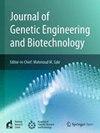与人类RAAS基因相关的非同义snp的计算和分子见解:高血压易感性的后果
IF 2.8
Q3 Biochemistry, Genetics and Molecular Biology
Journal of Genetic Engineering and Biotechnology
Pub Date : 2025-03-01
DOI:10.1016/j.jgeb.2025.100476
引用次数: 0
摘要
在全球范围内,高血压是心血管和肾脏疾病以及总死亡率的首要可改变危险因素。基因变异有可能改变个体对药物的反应。在本研究中,我们采用综合计算分析来评估有害错义变异的结构和功能意义,以检查RAAS基因(如AT1R、AT2R和MasR)对高血压易感性的影响。本研究的目的是鉴定这些靶基因中潜在的有害错义变异。共有13个计算机工具被用来鉴定有害的错义snp。使用I-Mutant 3.0、MUpro、DynaMut2、ConSurf和Project HOPE等工具评估蛋白质稳定性、进化保守性和3D结构建模,同时通过STRING分析蛋白质相互作用。我们发现AT1R中存在3个有害的错义变异(rs397514687、rs886058071、rs368951368);AT2R中存在两个有害的错义变体rs3729979和rs372930194;以及MasR中的三个有害错义变体(rs768037685, rs149100513和rs377679974),通过所使用的13种计算工具确定,所有这些变体都表现出显著的破坏性影响。所有这些有害的错义变异都对蛋白质的稳定性产生不利影响,并且被发现是高度保守的。值得注意的是,这些变异改变了氨基酸的电荷、大小和疏水性,主要发生在α螺旋区域,除了MasR中的rs377679974。本研究的计算分析和结构比较表明,这些有害的错义变异对靶蛋白的结构和功能有明显的影响。然而,必须进行实验验证,以验证通过该计算分析确定的错义变体的有害影响。因此,我们可以进行未来的实验分析来验证这些发现。这项研究将有助于识别候选有害标记物,这些标记物可能作为治疗策略和疾病诊断的潜在靶点。本文章由计算机程序翻译,如有差异,请以英文原文为准。
Computational and molecular insights on non-synonymous SNPs associated with human RAAS genes: Consequences for Hypertension vulnerability
Hypertension is the foremost modifiable risk factor for cardiovascular and renal diseases, and overall mortality on a global scale. Genetic variants have the potential to alter an individual’s drug responses. In the present study, we employed a comprehensive computational analysis to evaluate the structural and functional implications of deleterious missense variants to examine the influence of RAAS genes such as AT1R, AT2R, and MasR on susceptibility to hypertension. The objective of this research was to identify potentially deleterious missense variants within these target genes. A total of 13 in silico tools were used to identify deleterious missense SNPs. Protein stability, evolutionary conservation, and 3D structural modeling were assessed using tools like I-Mutant 3.0, MUpro, DynaMut2, ConSurf, and Project HOPE, while protein–protein interactions were analyzed via STRING. Our findings revealed three deleterious missense variants (rs397514687, rs886058071, rs368951368) in AT1R; two deleterious missense variants (rs3729979 and rs372930194) in AT2R; and three deleterious missense variants (rs768037685, rs149100513, and rs377679974) in MasR, all of which exhibited significant damaging effects as determined by the 13 Computational tools employed. All these deleterious missense variants adversely affected protein stability and were found to be highly conserved. Notably, these variants altered the charge, size, and hydrophobicity of the amino acids, with a predominant occurrence in alpha helix regions, with the exception of rs377679974 in MasR. The computational analysis and structural comparisons conducted in this study indicate that these deleterious missense variants have a discernible impact on the structure and function of the target proteins. However, it is essential to conduct experimental validation to verify the detrimental effects of the missense variants identified through this computational analysis. Therefore, we may conduct future experimental analyses to validate these findings. This research will aid in the identification of candidate deleterious markers that may serve as potential targets for therapeutic strategies and disease diagnosis.
求助全文
通过发布文献求助,成功后即可免费获取论文全文。
去求助
来源期刊

Journal of Genetic Engineering and Biotechnology
Biochemistry, Genetics and Molecular Biology-Biotechnology
CiteScore
5.70
自引率
5.70%
发文量
159
审稿时长
16 weeks
期刊介绍:
Journal of genetic engineering and biotechnology is devoted to rapid publication of full-length research papers that leads to significant contribution in advancing knowledge in genetic engineering and biotechnology and provide novel perspectives in this research area. JGEB includes all major themes related to genetic engineering and recombinant DNA. The area of interest of JGEB includes but not restricted to: •Plant genetics •Animal genetics •Bacterial enzymes •Agricultural Biotechnology, •Biochemistry, •Biophysics, •Bioinformatics, •Environmental Biotechnology, •Industrial Biotechnology, •Microbial biotechnology, •Medical Biotechnology, •Bioenergy, Biosafety, •Biosecurity, •Bioethics, •GMOS, •Genomic, •Proteomic JGEB accepts
 求助内容:
求助内容: 应助结果提醒方式:
应助结果提醒方式:


